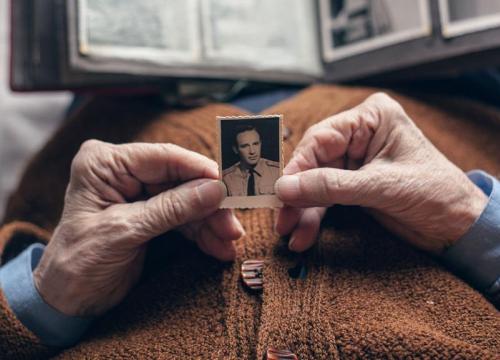The Role of Hospice
As Parkinson’s disease (PD) progresses into the advanced stages, its symptoms can often become increasingly difficult to manage. Whether the person with Parkinson’s lives at home, in an assisted living facility or a nursing home, hospice services can optimize their quality of life and that of their family members as well.
What Is Hospice?
Although hospice is often associated with a terminal disease such as cancer, it is an option for individuals with chronic diseases, such as PD. Hospice is a program of care designed to improve quality of life through pain relief and symptom management for individuals who are facing end-of-life. The goal of hospice services is to provide a quality, peaceful death while allowing the person with PD to remain in a familiar environment rather than a hospital setting. It can provide valuable bereavement services for caregivers and families for up to 11 months after the death of a loved one.
What Benefits Will Hospice
Provide for a Person and Family Living with Parkinson’s Disease? Hospice care can be provided in the home, in an assisted living facility, a nursing home or a hospice house. Home hospice services are the most common type of hospice service used by a person with Parkinson’s and offer the opportunity for the individual to remain at home during his or her last days and months of life surrounded by friends and family.
Hospice care provides a person with PD, his or her caregiver and family with health care providers who have expertise in the dying process. The core hospice staff comprises a physician, nurse, social worker and home health aides. The team may also include physical, occupational, speech and music therapists, as well as pastoral services. Some hospice agencies have volunteers who may visit the person with Parkinson’s, read stories or share musical talents. Hospice may also provide durable medical equipment, medical supplies, medications and counseling. Other services may be provided depending on the needs of the person with PD and the structure of the agency.
When is the Right Time for Hospice?
Determining when the time is right to consider hospice services can be a difficult decision for the person with Parkinson’s, their family and health care providers. Parkinson’s, while a chronic and progressive disease, has a course that can be uncertain with no clear indication of the end of life. Yet, those with PD often have additional significant medical problems such as advanced dementia, recurrent pneumonia, weight loss, urinary incontinence, infections and pain – that could be better managed through hospice.
Current Medicare benefit guidelines ask health care providers to project that an individual has six months or less to live to enroll in Medicare reimbursed hospice programs. However, many individuals live beyond six months while enrolled in hospice. At the end of the initial six-month period, the hospice agency will reevaluate the care plan and needs of the person with Parkinson’s and either re-enroll the individual or discharge the person with Parkinson’s from hospice. Patients are discharged from hospice if the individual improves to the point where he/she no longer meets hospice criteria.
How Can Hospice be Discussed with a Loved One with Parkinson’s Disease?
There are four parties involved in enrolling a person in hospice and managing end-of-life care: the family/caregivers, the person with Parkinson’s, the hospice agency and the health care provider. Hospice often has negative associations for individuals and is thought to be a sign of “giving up” or accepting “that there is no hope.” Overcoming these negative associations is an important first step in having the conversation about the benefits of end-of-life care in hospice. Discussing end-of-life issues is difficult and often avoided. As part of the care team, individuals with PD, caregivers, and health care providers can participate equally in ongoing discussions about planning for end-of-life care.
How Does One Pay for Hospice?
Private health insurance, Medicare, and Medicaid usually provide hospice coverage.
How Does One Apply for Hospice Services?
Physicians initiate the enrollment process for a person with PD by making a referral to a hospice agency. Families can have input in the selection of the hospice agency by getting recommendations from outside resources (i.e., support groups) or by researching local agencies. The National Association for Home Care and Hospice provides information on how to locate hospice services at: https://agencylocator.nahc.org.
Once the doctor has sent a referral to the agency, a hospice nurse will come to the home for an initial assessment to determine if the person with PD is eligible. If the individual qualifies, he or she will be evaluated for their specific needs, types of services, frequency of care and equipment.
Questions to Ask When Considering Hospice:
- Does the person with PD understand his or her prognosis and health care needs?
- Does the person with PD want to remain in their current residential setting until the end of life?
- Has the person’s health care provider been consulted in planning for end-of-life care?
- Is there a living will and/or power of attorney in place for the person with PD?
- If the person with PD is unable to communicate their wishes for end-of-life care, can someone represent their wishes?
- How much does the person with PD know about hospice and how does he or she feel about it?
- Does the person with PD have insurance or is he or she Medicare/Medicaid-eligible for hospice care?
Related Materials
Related Blog Posts

6 Questions for Exploring Your Parkinson’s-Related Grief

Palliative Care and Hospice: 5 Tips for Advocating for Yourself and Your Loved One
